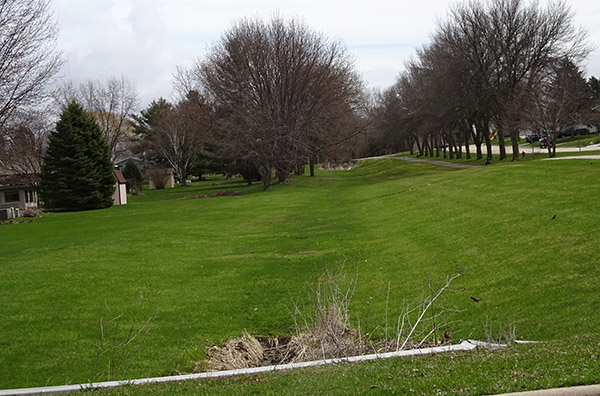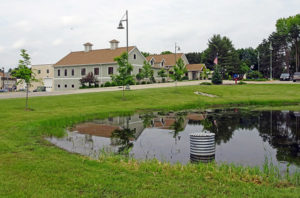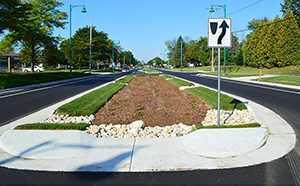How Do You Reduce Runoff Pollution?

When it comes to a community having its stormwater runoff problems evaluated, spending a little money up front can potentially save that community a lot down the road.
Stormwater runoff – rain and melting snow that flows from developed areas – is often contaminated with a variety of pollutants. The contaminated water gets collected by a community’s drainage system along streets and parking lots, flows through ditches and underground pipes, and is discharged to wetlands or directly into waterways. Treatment devices such as ponds, rain gardens, bioretention devices, and vegetated swales can reduce the amount of pollutants that reach our wetlands, streams, lakes, and rivers.
Reducing Pollution from Runoff

The Wisconsin Department of Natural Resources (WDNR) has goals to reduce pollutant loadings to waterbodies to help meet minimum water quality standards. One of the main tools being used for impaired waterways is a total maximum daily load (TMDL). A TMDL establishes a maximum amount of pollutants that an impaired waterbody can handle and still meet desired water quality standards. A TMDL also establishes the amount of pollutants each runoff source contributes to the waterbody. Once a TMDL is established for a waterbody, each runoff source is allocated a maximum pollutant load that can be discharged to that waterbody. Generally runoff sources discharge more than their allocation.

In Wisconsin about 220 municipalities (generally those with a population of 10,000 or more) are required to have a Wisconsin Pollutant Discharge Elimination System (WPDES) Municipal Separate Storm Sewer System (MS4) permit. The permit requires these communities to reduce the pollutants in their stormwater runoff. And if runoff is ultimately discharged to an impaired waterway, then additional pollutant removal may be required as determined in the TMDL. Pollutants are removed from runoff by using what are called best management practices, or BMPs.
There are several ways to meet pollutant reduction requirements. Unfortunately for communities, the cost for pollutant reduction can range from tens of thousands to millions of dollars per year based on their contribution of pollutants (mainly phosphorus and total suspended solids) entering into these impaired waterways.
A Case in Point
That’s where Ayres Associates comes in. We can assess the amount of pollutants in a community’s stormwater runoff through a computer modeling program called WinSLAMM, which also determines the location of problem areas. If this detailed modeling analysis proves a community’s stormwater pollutant discharge load is lower than current WDNR estimates, the community can reduce its costs for reducing pollution of an impaired waterway by tens of thousands of dollars a year. The cost of the modeling work could potentially pay for itself in assessment savings in one year.
This is exactly what happened with a project we recently completed in the Village of Windsor in Dane County, Wisconsin. Our stormwater modeling evaluated the pollutant levels in the Village’s stormwater runoff and the treatment effectiveness of the Village’s existing BMPs.
Through its intergovernmental agreement with the Yahara Watershed Improvement Network and the adaptive management program, the Village is scheduled to pay for its share of phosphorus contributions to the watershed. Our modeling project showed that the Village discharges less phosphorus than current estimates determined in the TMDL document, which will save the Village about $30,000 on its annual allocation payment.
Going Beyond the Study
Once the modeling work is done, our water resources and civil engineers can work with communities to improve their BMPs to further cut the amount of pollutants being discharged, leading to more potential savings and improvements to the environment.
Want to know more? Reach out to one of our River Engineering + Water Resources professionals.
Comments
I have another very good Stormwater management practice….Permeable Pavers, which is endorsed by the Wisconsin DNR Conservation Practice Standard ( 1008 ) I would be happy to share this information with anyone in Stormwater Management or Design.
Sincerely,
Terry Zoellner – County Materials Corp.

Post a comment: